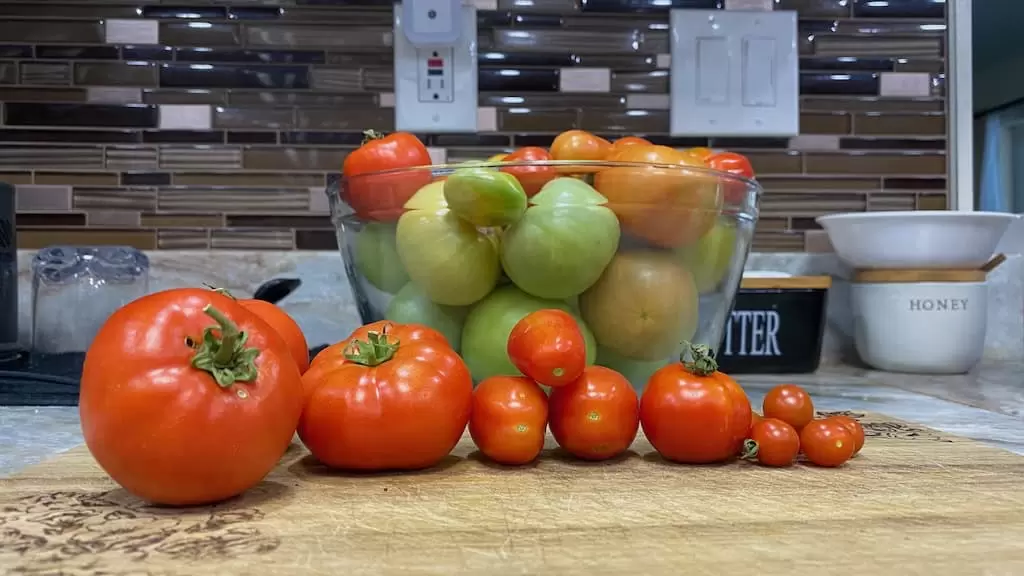Last Updated on February 8, 2024 by Homegrown Florida
I have been unsuccessfully growing watermelons for five long and frustrating years. But this year I made some really good progress, and I wanted to share my experiences with you in case you have also been struggling with growing them in your garden. So, I’ve come up with six tips to growing super big watermelons in your backyard garden. Let’s jump right into it.
Growing Watermelons in Florida:
I know that some of you are going to tell me that growing watermelons in Florida is the easiest plant to grow in our super warm climate, but for some reason, watermelons have been my nemesis for a very long time. The first year I tried growing them, I planted sugar baby watermelons from seed in my raised bed. The vine started growing like out of control, and I didn’t even get one watermelon to pollinate. So, I researched it, and I realized I wasn’t getting enough pollinators.
Challenges in Previous Years:
The next year, I started hand pollinating and was able to get a few watermelons pollinated. However, they didn’t mature, and the vines started dying. I also faced issues with fertilizing. In year three, I got the melons growing, pollinated, fertilized correctly, but then faced a bad fungus issue, and the plant died. Year four brought pickle worms and more fungus issues. I finally got melons to maturity but picked them too soon, almost giving up.

Year Five: The Turning Point:
So, here we are at year five, and watermelons were one of my primary goals for the spring season. I started my melons much earlier this spring, around January, to avoid the fungal issues during the drought season. I chose five new varieties: Crimson Sweet, Tender Sweet Seedless Hybrid, Moon and Stars, Congo, and Jubilee.

Detailed Steps:
- I started the seeds early in pots to avoid frost.
- Transplanted in mid-February, giving ample space for each plant.
- Added Tomatotone fertilizer during transplanting.
- Implemented a monthly schedule for spraying with water and hydrogen peroxide to prevent fungal issues, monthly Spinosad applications for worms, and monthly fertilizing with tomatotone and fish fertilizer.
- Hand-pollinated initially but later found natural pollinators in the garden.
- Used large pots to support growing melons instead of laying them on the soil where pests could bore into them.
- Watered moderately to concentrate sweetness. Overwatering can lead to bland watermelons.
- Waited for the tendril to turn brown almost entirely before harvesting.

Results:
Harvested three fully ripe watermelons. A lot more than that grew but the rest of the melons were either harvested early, didn’t survive due to bug damage, or snapping off the plant while moving them around. Moon and Stars turned out to be the most productive and sweet variety. Crimson Sweet was the earliest maturing variety. Happy gardening!



